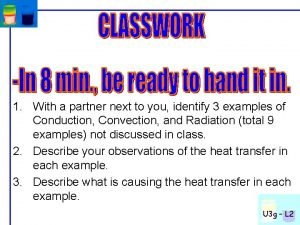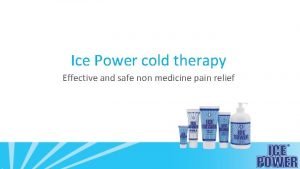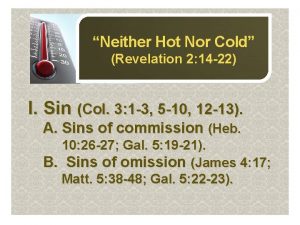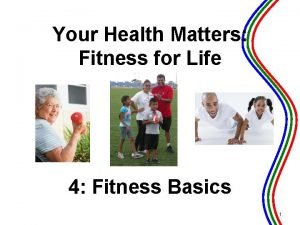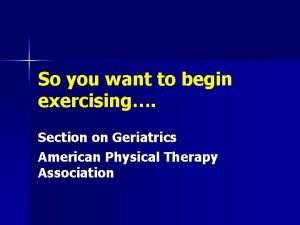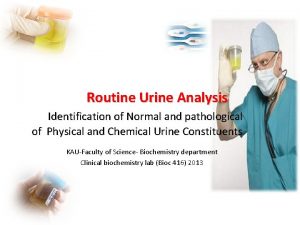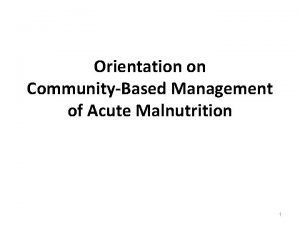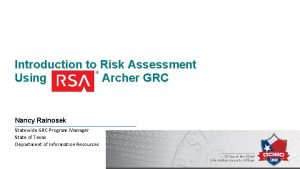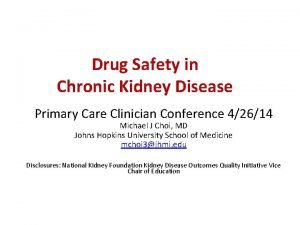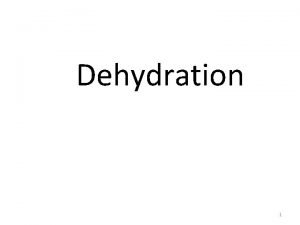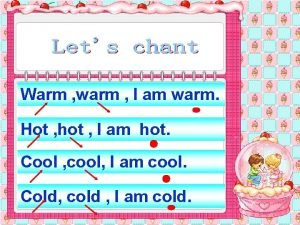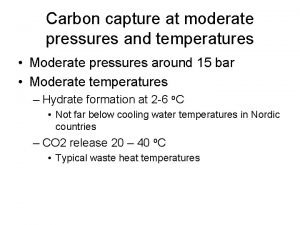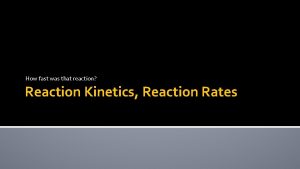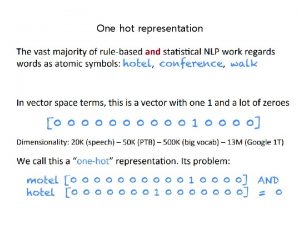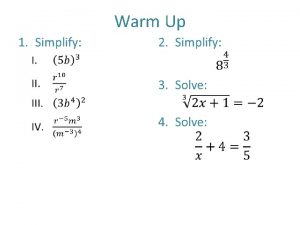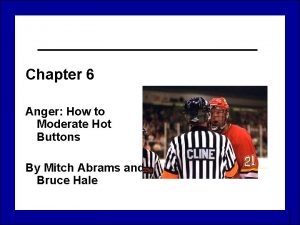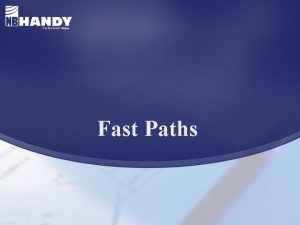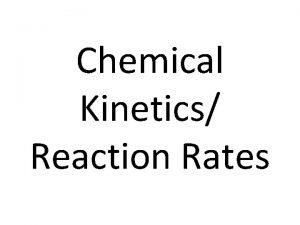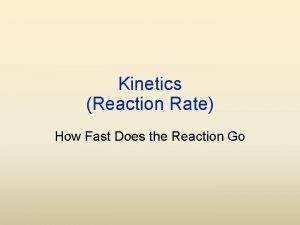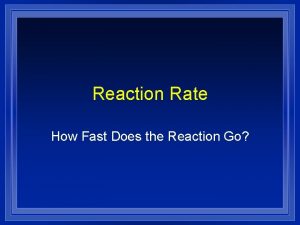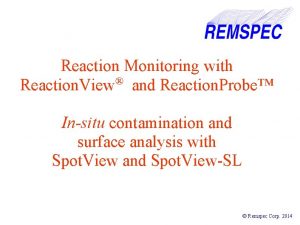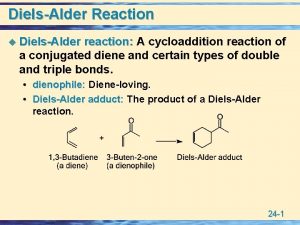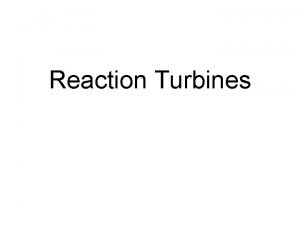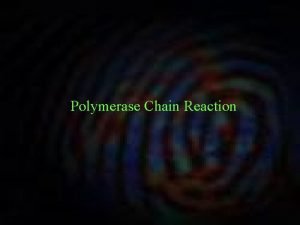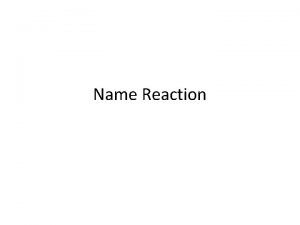Warm water Fast Reaction Hot Water Moderate reaction





























- Slides: 29

Warm water (Fast Reaction) Hot Water (Moderate reaction) Cold Water (slow reaction)

12/13 Warm up: What can you say about the reaction rates of the pepsin and trypsin enzymes and p. H? Pepsin works better at p. H 2 Trypsin works better at p. H 8

Spiders and Enzymes n To feed, black widows puncture their insect prey with their fangs and administer digestive enzymes to the corpses. By using these enzymes, and their gnashing fangs, the spiders liquefy their prey's bodies and suck up the resulting fluid.

Please be courteous, Silence And put away Your mobile devices in class And avoid Detention! Thanks!

12/13 Bell Work: what do you think was in liver, potato and mushroom that reacted with Hydrogen peroxide? + = Reaction! We think it might be another chemical, actually is an enzyme called catalase ?

Why does our bodies produce hydrogen Peroxide? When the immune system is activated in response to bacteria, large amounts of hydrogen peroxide are produced by certain cells to fight the infection. n But high levels of H 2 O 2 can damage the cells. n Therefore the liver breaks down H 2 O 2 with the help of Catalase n https: //www. youtube. com/watch? v=b. Jh. Sy_Hm k. UE n

2 H 2 O 2 Catalase n n (Liquid) ? + (gas) ? One of the products of this reaction is a gas, the other is a clear liquid. Looking at the elements present in hydrogen peroxide (H 2 O 2), what might be the clear liquid formed? Based on the tests performed in class, what could the gas be? Complete the following chemical equation (be sure you balance it!):

https: //www. youtube. com/watch? v=b. Jh. Sy _Hmk. UE n https: //www. youtube. com/watch? v=qg. VFk Rn 8 f 10 enzymes n https: //www. youtube. com/watch? v=wbh 3 S jzydn. Q liver n

Enzymes Notes § § Enzymes are proteins that assist (help) biochemical reactions by bringing key molecules together. Enzymes are called catalysers(they speed reactions). §http: //programs. northlandcollege. edu/biology/Biology 1111/animat ions/enzyme. html

Ex: Milk and Lactase n n The main cause of lactose intolerance is the enzyme lactase lack. The enzyme lactase is known to break down lactose into galactose and glucose. If the body is unable to digest lactose contained in milk, the person suffers from lactose intolerance.

What are enzymes important? • They help cells regulate the cell cycle. . . reactions work faster and less energy is used!

Enzyme Structure -Enzymes have at least one active site -only one certain molecule can fit the active site (lock and key)

Degradation reactions (breaking apart) animation

Degradation reactions steps A substrate attaches to an enzyme’s active site. n Enzyme flexes to conform to the substrate’s shape and breaks bonds on substrate. n Enzyme is not changed but new products are formed. n

Ex: Catalase in the liver § The enzyme catalase breaks down the waste substance hydrogen peroxide into water and oxygen. catalase Hydrogen peroxide oxygen + water (substrate) (enzyme) (products)

Synthesis Reaction (putting together) es Active site

Synthesis reaction Glucose-1 phosphate Starch Plants use enzymes to change glucose into starch

Enzyme activity Temperature and p. H affect the activity of an enzyme.

Optimum Condition Enzymes function best or are most active in specific conditions known as optimum conditions. n Enzymes might become denatured and unusable at higher temp. or p. H n

You can find enzymes in… • in toothpaste • laundry detergent • meat tenderizers • chocolate covered cherries • your cells!


Please be courteous, Silence And put away Your mobile devices in class And avoid Detention! Thanks!

12/14 bell work: what is the optimum temperature for this Catalase enzyme? (HINT: Where is the rate the highest? ) At ~ 43°C

Enzyme Cut –Outs Activity n Instructions

Please be courteous, Silence And put away Your mobile devices in class And avoid Detention! Thanks!

12/18: Bell Work: Is this a Degradation (breaking apart) or synthesis (putting together) enzyme reaction? Label the parts A thru D This is degradation (breaking apart) n A= substrate n B= Enzyme n C=Substrate/ Enzyme complex n D= enzyme n E= products


Enzyme + substrate → enzyme-substrate complex → enzyme + product 1 + product 2

Lock and Key n http: //www. lewport. wnyric. org/jwanamaker/ animations/Enzyme%20 activity. html
 Water and water and water water
Water and water and water water Warm water rises in a lake. cold water descends.
Warm water rises in a lake. cold water descends. Non acid fast bacteria
Non acid fast bacteria Acid fast vs non acid fast
Acid fast vs non acid fast Hot site cold site warm site disaster recovery
Hot site cold site warm site disaster recovery Cold hot warm
Cold hot warm The baby chickens are kept warm from the heat lamps.
The baby chickens are kept warm from the heat lamps. Ice power hot warm gel
Ice power hot warm gel White hot vs red hot temperature
White hot vs red hot temperature Hot working of metals is carried out
Hot working of metals is carried out Perbedaan hot lava dan hot lava volcano
Perbedaan hot lava dan hot lava volcano Hot nor
Hot nor Light to moderate exercise
Light to moderate exercise Activity sheet 2: stock market calculations answer key
Activity sheet 2: stock market calculations answer key Activity sheet 2 stock market calculations
Activity sheet 2 stock market calculations Light to moderate exercise
Light to moderate exercise Ketones in urine moderate
Ketones in urine moderate Moderate activity examples
Moderate activity examples Moderate activity examples
Moderate activity examples Katrine zhiroff
Katrine zhiroff Moderate acute malnutrition
Moderate acute malnutrition Moderate spending
Moderate spending Archer risk assessment
Archer risk assessment A moderate risk environment
A moderate risk environment Icd 10 code for allergic conjunctivitis
Icd 10 code for allergic conjunctivitis Firewall fitness
Firewall fitness Moderate renal impairment egfr
Moderate renal impairment egfr Types of dehydration
Types of dehydration Mild moderate severe dehydration
Mild moderate severe dehydration Moderate physical activity examples
Moderate physical activity examples

